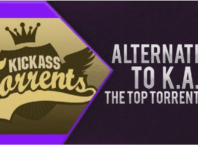Security has become an essential aspect of technology advances. With digital transformation initiatives in top gear, several business technologies are being developed in today’s modern world. However, such technologies must be maintained in a safe and secure environment as cybersecurity threats are a significant concern today. Businesses are endeavoring to achieve a security platform that is 100 percent safe and secure.
Today enterprises cannot do without cloud security, and being aware of the best practices essential for a secure cloud environment makes sense. Whatever your cloud security strategy, the specifics should include absolute protection to save critical IT infrastructure.
Here are the best practices that will help maintain a secure cloud environment:
Contents
The Cloud and Data Encryption
Whenever you store data in the cloud, you have to ensure that your data is well-protected. It is advisable to create a cloud environment conducive to support data encryption to accommodate the safe movement of data to and from the cloud. Your cloud security platform can protect your IT infrastructure only if your provider provides detailed guidelines on how your stored data will be protected.
Sound Data Deletion Policies
As a growing enterprise, you may want to switch providers or have multiple cloud service providers shortly. Under such circumstances, you may need to migrate from one provider to another or migrate back to on-premise architecture. In either case, you need to delete your client’s data safely. It would help if you had sound data deletion policies to protect your IT infrastructure.
Continued Monitoring for Security Threats
Your cloud provider will certainly have inbuilt security solutions to protect your data and infrastructure against cyber threats. The problem is that, more often than not, this is hardly enough. It would help if you were vigilant enough with your cloud security platform to prevent threats to your IT infrastructure. Only continual monitoring of your cloud environment helps you detect hidden malware, which you can remove safely.
Penetration Tests by Default
Your cloud infrastructure is susceptible to security gaps. Unless these gaps are detected and plugged, you invite threats to your IT infrastructure in the cloud. Most cloud providers permit their clients to perform penetration tests to detect these security gaps, while others insist on doing it themselves. The important thing is to ensure that such tests are conducted routinely to keep your cloud security platform intact and your IT infrastructure safe by preventing breaches.
Making your Employees Aware of Security Practices
Training your employees on best cloud security practices helps detect threats from within. You never know which employee is indulging in misuse of your cloud environment. It may be due to the dereliction of duty or lack of proper knowledge on security issues. Training your employees on security aspects is time well-spent as it helps prevent internal security threats, which are equally harmful to your IT infrastructure.
Planning Your Architecture
Even before you can deploy applications, servers, or services to the cloud, it is advisable to take enough time to plan the proper distribution of your architecture. One best practice is to conduct an audit to understand and protect your IT infrastructure, even before beginning security integrations, whatsoever.
You need to have a clear idea of all hardware elements in your infrastructure, without which it isn’t easy to make informed decisions or maintain security as your top priority.
You need to map your cloud environment and decide to either spend money on a comprehensive security solution or have independent services that you can integrate at your convenience. It all depends on your outlook and actual needs at that time.
Cost should not be the only consideration while evaluating security solutions, although it is preferable to have a comprehensive security solution despite the extra cost. A centralized security system is easier to handle and also lets you focus on your core competencies.
Vigilant Access Control
Anyone who is granted access to your sensitive data needs to have proper security clearance. Enforcing strict access control policies goes a long way in protecting your IT infrastructure as you can control and manage the users attempting to enter your cloud environment. Granting specific rights with well-laid out access policies to specific users helps restrict low-level cloud users. However, only high-level security administrators can be granted access.
Importance of Cloud Automation
If you have plans to grow, cloud automation has the best answer. A large enterprise with multiple branches can use cloud computing to set up offices, thanks to cloud automation.
Automation also requires minimum human intervention, leading to fewer mistakes and also minimizes the chances of malicious harm occurring. Cloud automation certainly helps keep your IT infrastructure safe and secure.
Summing it Up
Regardless of your enterprise’s size, you must have a security team in place. With software and hardware integration and constant changes taking place, any complacency in cloud security leads to damage to your infrastructure.












